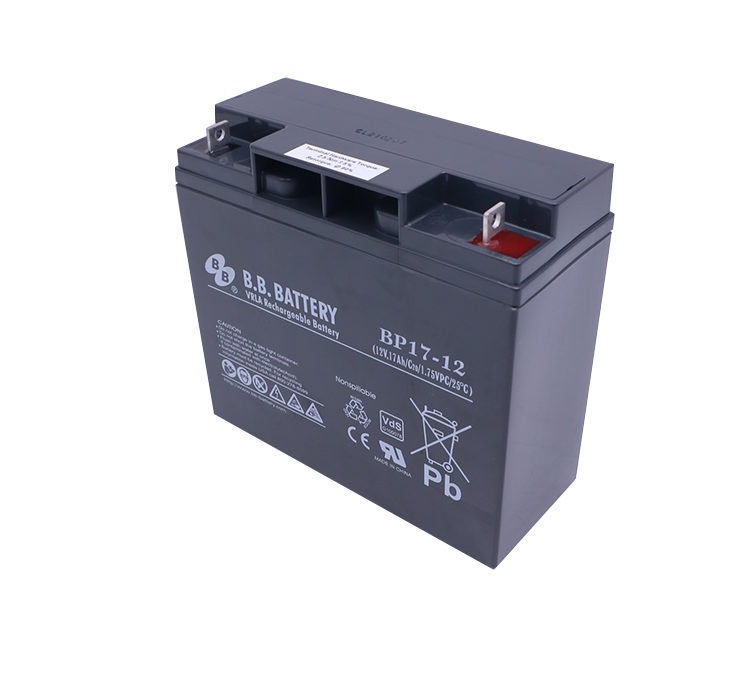Define Of Lead-Acid Battery
The lead-acid battery (VRLA) is a battery whose electrodes are mainly made of lead and its oxides and whose electrolyte is a sulphuric acid solution. In the discharged state, the main component of the positive electrode is lead dioxide and the negative electrode is lead; in the charged state, the main component of both the positive and negative electrodes is lead sulfate.
The nominal voltage of a single-cell lead-acid battery is 2.0V, which can be discharged to 1.5V and charged to 2.4V; in applications, six single-cell lead-acid batteries are often connected in series to form a nominal 12V lead-acid battery, as well as 24V, 36V, 48V, etc.
The Development History Of Lead-Acid Battery
The lead-acid battery was introduced in 1918, initially at 6 V. As the displacement of the internal combustion engine increased and the compression ratio increased, the power provided by the 6 V system was no longer sufficient to meet demand and a 12 V system was introduced in 1950. As the number of electrical devices in cars continued to increase, the 12V system also struggled to meet the power requirements of all the devices and could only cut off high power loads at certain stages, leading to problems such as air conditioning not being available when parked. After the introduction of the start-stop system, the 12V system has reached the limit of its own power output, at which point the continued addition of high-powered appliances such as light-hybrid BSG motors to the 12V system will result in transient currents of up to 1000 amps. This is why in 2011 the German car companies Audi, BMW, Daimler, and VW joined forces to introduce a 48V system to meet the demands of high power vehicle loads. The reason for choosing 48V is that the safe voltage for cars is 60V and the 48V battery charging voltage is up to 56V. 48V is the highest voltage level that can be achieved at a safe voltage.
The 12V low voltage system can be powered by either lead-acid batteries or lithium iron phosphate batteries. Through cost, performance, safety, and supply chain maturity of many comparisons, lead-acid batteries are currently stronger than lithium batteries in all aspects, the only drawback is that the same power, lead-acid batteries are heavier and larger, as the lead-acid batteries for cars are not high power, the increase in weight and occupy a limited cabin volume. Only in the pursuit of extreme lightness will lithium batteries be used instead of lead-acid batteries in the pursuit of extreme weight reduction.
The Working Theory Of Lead-Acid Battery
The composition and working principle of lead-acid batteries consist of positive plates, negative plates, partition plates, electrolytes, plastic tanks, etc. The active substance of the positive electrode of the lead-acid battery is lead dioxide (PbO2), the active substance of the negative electrode is lead (Pb), the electrolyte is dilute sulphuric acid, and the positive and negative electrodes are separated by a partition plate. After discharging the lead-acid battery, the active material PbO2 in the positive electrode is transformed into lead sulfate (PbSO4) and attached to the positive electrode, while the active material Pb in the negative electrode is also transformed into lead sulfate (PbSO4) and attached to the negative electrode, and the sulphuric acid in the electrolyte diffuses into the electrode plate, reducing the concentration of the electrolyte. When the lead-acid battery is charged, the opposite reaction takes place. Through charging and discharging reactions, the lead-acid battery can be used repeatedly until the stored capacity fails to meet the requirements of the appliance when its life is terminated.
Types Of Lead-Acid Battery
1. Ordinary Battery
The ordinary battery’s pole plate is composed of lead and lead oxide, and the electrolyte is an aqueous solution of sulphuric acid. Its main advantage is that the voltage is stable and the price is cheap; the disadvantage is that the specific energy is low (i.e. the electrical energy stored per kilogram of battery) and the service life is short and the routine maintenance is frequent.
2. Dry Charge Battery
Its full name is dry charge lead-acid battery, its main feature is the negative plate has a high storage capacity, in a completely dry state, can save the power obtained within two years, when using, only need to add electrolyte, and so on over 20-30 minutes can be used.
3. Maintenance-Free Battery
Maintenance-free battery due to its own structural advantages, electrolyte consumption is very small, in the service life of the basic do not need to replenish distilled water. It also has the characteristics of shock resistance, high-temperature resistance, small size, and small self-discharge. It is generally twice as long as a normal battery. There are two types of maintenance-free batteries on the market: the first is a one-off electrolyte added at the time of purchase, which does not require maintenance in the future (replenishment); the other is a battery that has been sealed with electrolyte when it leaves the factory so that the user cannot add replenishment at all.
Application Of Lead-Acid Battery
1. Used in a variety of cars, tractors, diesel engines starting and ignition, lighting; starting requires high current discharge, requires the ability to start at low temperature, the small internal resistance of the battery.
2. Used in power plants, substations, communications, hospitals, etc. as a backup power source for protection, automatic control, accident lighting, communications, etc.; the electrolyte is dilute, long life, and simple charging;
2. Used in various battery cars, forklifts, shovels, mining motor cars, etc. As electric traction and lighting power supply; requires thick pole plate, large capacity, 3h~5h rate charge/discharge cycle;
In the end, Lead-acid battery changes our life to a great extent.
